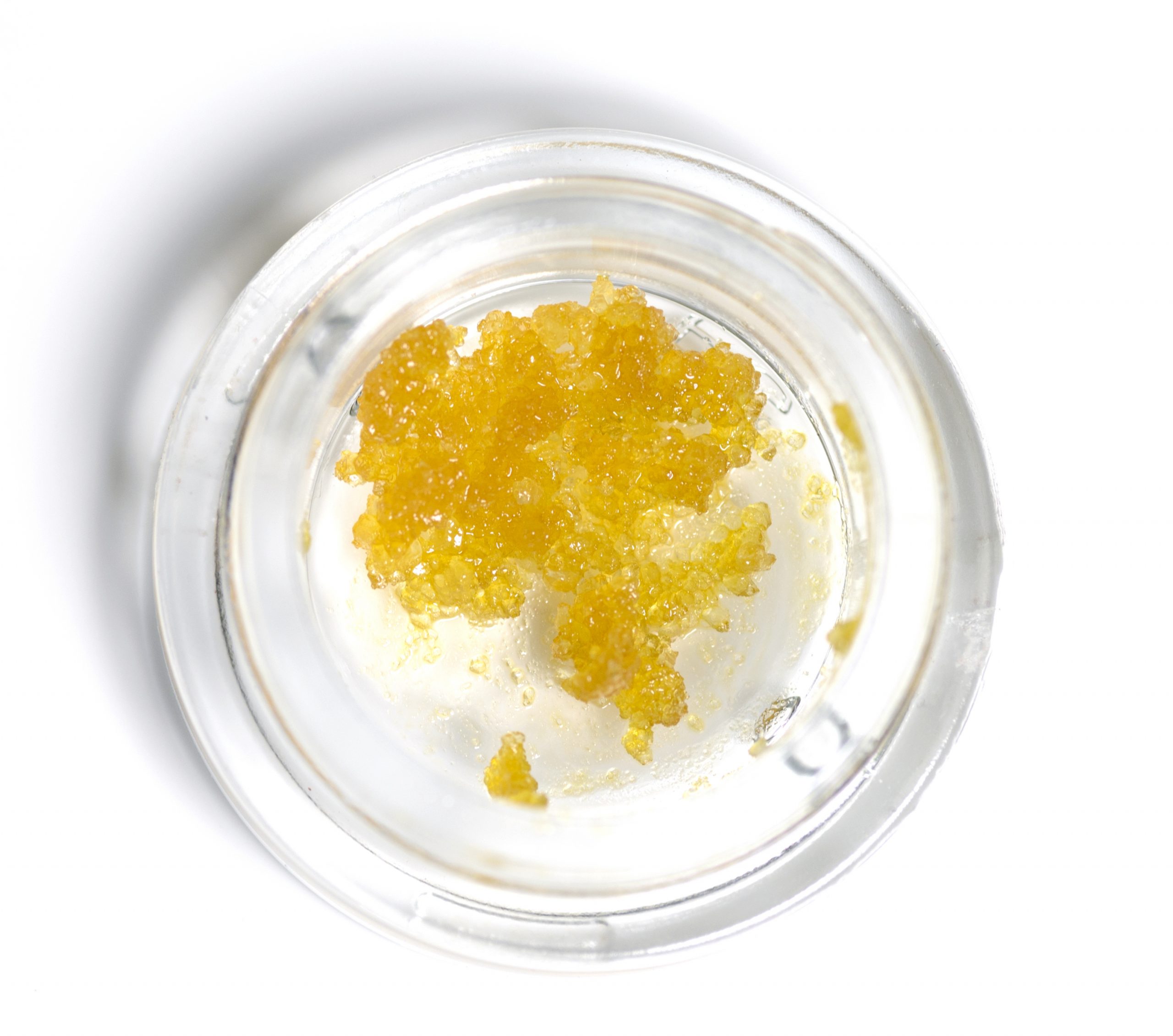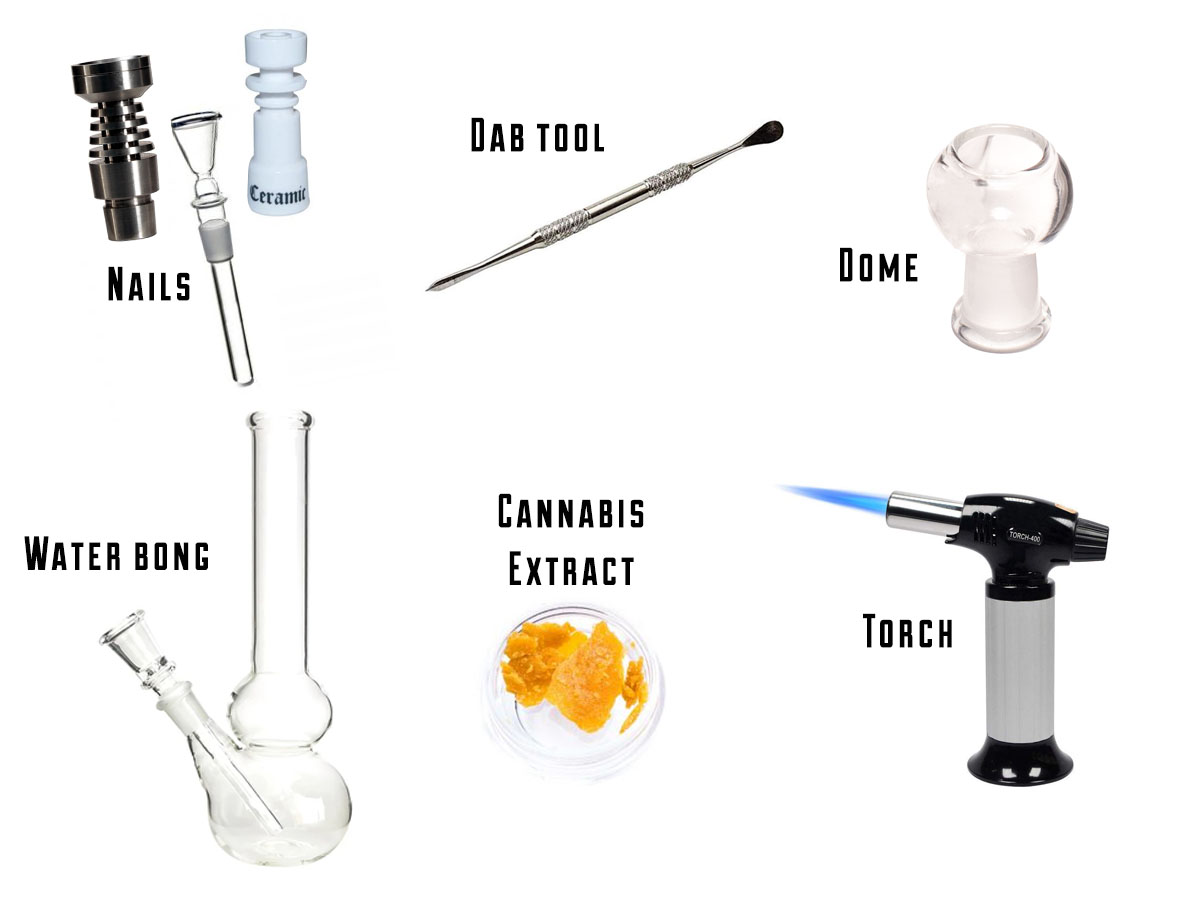Different Marijuana Concentrates 101: Part 2
By CLOVR Cannabis
September 23 2019

September 23 2019
In part 1 we learned about the different marijuana concentrates. Now, in part 2, we will go over how those cannabis concentrate types are determined through textures, materials, and processing. The interesting thing about marijuana concentrates is that the effects, potency and flavors are not indicated by the look and feel. However, you can use those attributes to help find your preference. Let’s start by talking about some of those characteristics.
The marijuana concentrates texture oftentimes comes straight from what it looks like: shattered glass, cake batter and butter. Seeing the concentrates and learning the textures one can see where they got their names.
Here are the most common textures when describing cannabis concentrates.

Crumble is usually a matte yellow color similar to badder and budder but that is more brittle. Hence, the name crumble.

Crystalline is a single, diamond-like compound of either THCA or CBD that varies in shape and size. It can take the form of a powder or be as dense as a small rock.
 Budder or Badder: A soft and oily concentrate, this texture has a cake batter or butter consistency. Also, like butter it can easily spread so this concentrate is perfect for dabs or to add to a blunt or joint.
Budder or Badder: A soft and oily concentrate, this texture has a cake batter or butter consistency. Also, like butter it can easily spread so this concentrate is perfect for dabs or to add to a blunt or joint.

Sauce is a thicker, sticker version of sugar, but has more of a crystalline appearance. Unlike sugar, there is more variance in its color ranging from a yellow mustard you’d find on a hot dog to a deep, dark amber.

Sugar: Also yellow and amber in color, the sugar texture is wet and sappy. It gets its name because it can often look like sticky brown sugar.
Try one of CLOVR’s Triangle Mints Live Sugar or Lemon Cookie OG Live Sugar!

Shatter has a glass-like texture with yellow or amber color. It is brittle and sometimes translucent making it look like shattered glass.

Oil: Just like the texture states this concentrate is an oil-like liquid that is too thick to be a tincture but to fluid to be a solid, much like a honey or syrup consistency when made correctly. Oil is most commonly used to vape.
There are really two types of extraction: physical and liquid. Meaning cannabis extraction can be done with or without solvents (liquid) using temperature, filters, pressure or just screens and elbow grease.
In part one we went over well-known, commonly used cannabis extracts. Now, in part two we will dive a little deeper into some other forms of cannabis extracts that don’t need a solvent at all.
 Kief: With THC content ranging from 20-60 percent, kief (sometimes spelled keef) is one of the simplest forms of cannabis concentrates and often more potent than just cannabis flower. Kief is composed of the crystal-like structures that cover the outside of the flower called trichomes, which hold the majority of the cannabinoids. When kief is greener it usually means there is more plant material present and needs to be sifted further. A light tan color is a higher quality kief. Kief can be used in many ways: add it to your coffee, use it as a tea, sprinkle on your blunt/joint, or make it into butter.
Kief: With THC content ranging from 20-60 percent, kief (sometimes spelled keef) is one of the simplest forms of cannabis concentrates and often more potent than just cannabis flower. Kief is composed of the crystal-like structures that cover the outside of the flower called trichomes, which hold the majority of the cannabinoids. When kief is greener it usually means there is more plant material present and needs to be sifted further. A light tan color is a higher quality kief. Kief can be used in many ways: add it to your coffee, use it as a tea, sprinkle on your blunt/joint, or make it into butter.
Hash (hashish): OK, this probably should have been included in Part 1 as cannabis hash has been used for centuries with different types of extraction methods. Hash is essentially created when the trichome heads, which contain the aromatic terpenes and the cannabinoids, are separated from the plant material and collected. There are many methods used to do this. Leafly created a video showing two of the methods, below.
There are different ways to consuming marijuana concentrate and it depends on which concentrate you choose and its texture. Is it an oil? Highly malleable? Powdery? Below are the most popular ways to consume concentrates.
 A handheld vaporizer is similar in that it is discreet and portable, and doesn’t require multiple tools like a dab rig. The difference lies in the fact that you manually load concentrate into a chamber that contains a coil. This coil is also heated by the push of a button, vaporizing the concentrate. The vaporizer is reusable and you won’t be buying multiple cartridges. You get to choose which concentrates you use with this pen.
A handheld vaporizer is similar in that it is discreet and portable, and doesn’t require multiple tools like a dab rig. The difference lies in the fact that you manually load concentrate into a chamber that contains a coil. This coil is also heated by the push of a button, vaporizing the concentrate. The vaporizer is reusable and you won’t be buying multiple cartridges. You get to choose which concentrates you use with this pen.
Be sure to check out CLOVR’s vape pens and cartridges!
